“Those who voluntarily protected the country, righteous army”
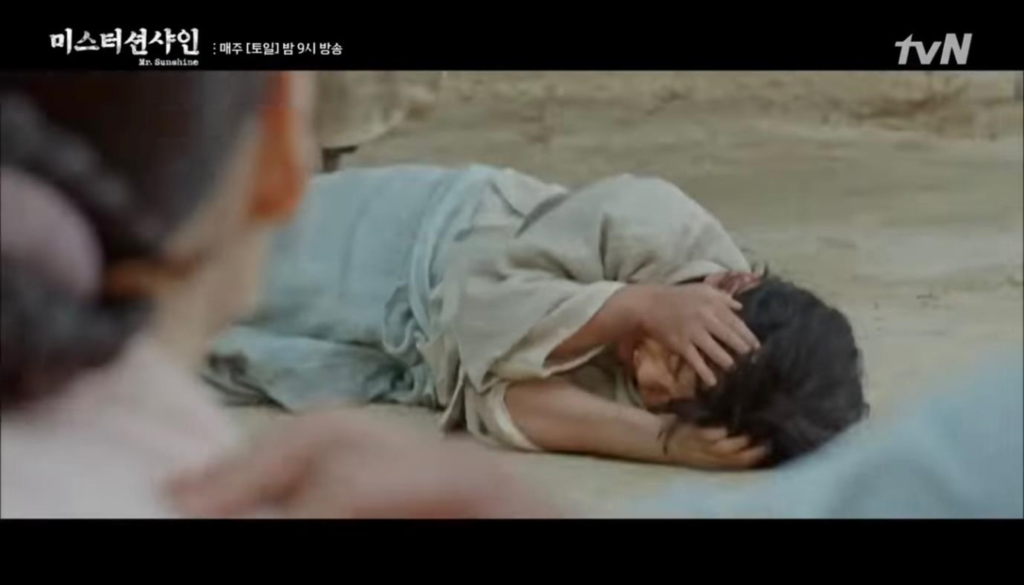
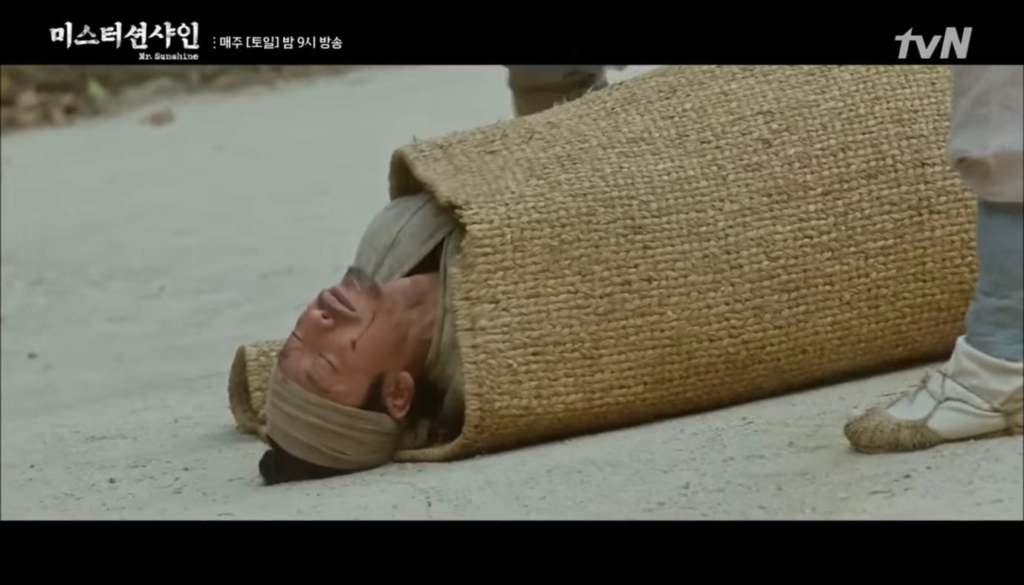
▲ (Mr. Sunshine episode 1) Young Eugene (left) and Eugene’s father (right) who were born as slaves and treated as simple possessions
The main character, Eugene Choi, was born as a slave in Joseon. Eugene witnesses the death of his parents in front of his eyes and moves to the United State. Eugene Choi, who chose the United States as his country, made many contributions by becoming a U.S. army. Eugene Choi, who chose the United States as his country, made many contributions by becoming a U.S. army.
Eugene, who had not good feelings for Joseon, intended to come back to the U.S. after finishing his work. But in Joseon, he meets a woman who shakes his heart. Ko Ae-shin.

▲ (Mr. Sunshine Episode 20) Ko Ae-shin punishes the traitor
Ae-shin is the last precious blood relative of the the Ko’s family. Ko Ae-shin is a flower-like Aegissi (young aristocratic lady, mademoiselle) that everyone in the neighborhood loves. But at night, she secretly carries a knife and gun and engages in righteous activities like flame.
Ae-shin is not the only one who acts as a righteous army. In the drama, there are many nameless heroes such as slaves, butcher, women, and confucian scholars who engage in righteous army with a strict sense of duty regardless of their status

The photo above was taken in Korea by F.A. McKenzie, a British war correspondent of “Daily Mail” between 1906 and 1907. There are images of righteous army in the picture. “Mr. Sunshine” touched people by recreating the photo in drama.

McKenzie described them as follows while taking this photo.
“A bright look and a confident smile on your face”
Who the is the ‘righteous army’ in Mr. Sunshine?
Who are they to smile confidently?
What did they fight for?
▲ (Mr. Sunshine EP. 24) Reproduction of the righteous army in the drama
#Then what is the righteous army?
Righteous army refers to people who voluntarily armed themselves and fought for state when state was difficult, such as foreign invasion.
Even without coercion, the righteous army voluntarily sacrifices their lives to protect the country.
Signs of righteous army can be found throughout Korean history. The reason why Goryeo was able to fight for decades when it was invaded by Mongolia (1231-1259) was because there were people who sacrificed their lives to protect the country voluntarily. During the Imjin War (Japanese Invasion of Korea in 1592~1598), the reason why the country could be preserved from Japan was largely due to the role of righteous army in various regions of the country.
Inheriting this spirit, righteous soldiers are active at the Late Period of Joseon. They fought against Japan’s unjust interference. Mr. Sunshine is a drama about the activities of righteous soldiers at the end of the Late Period of Joseon.

▲ (Mr. Sunshine Episode 18) The appearance of the Japanese military Colonel “Mori Takashi”
“(Mori Takashi) Joseon survived up to now in spite of wars with Japan and the Qing Dynasty.
Do you know why? People risk their lives to save their country every time. Who? It’s the common people. They call themselves the ‘righteous army’.
The children of those who were righteous army in the year of Imjin become righteous army in the year of Eulmi.
Then, What are the children of those who were righteous army in the year of Eulmi doing now?”
“Mr. Sunshine,” a drama about righteous army in the late Joseon Dynasty. If you he righteous army of the early periodtake a deeper look at righteous army during this period, you will be able to better understand the drama.
#History of righteous army in the late Joseon Dynasty
1. the righteous army of the early period (the righteous army in the year of Gabo, Eulmi)
Early righteous army began in 1894 when the Japanese army occupied Gyeongbokgung Palace by force. Later, Japan assassinated Empress Myeongseong, the queen of Joseon (Eulmi Incident) and the government promulgated the ordinance prohibiting topknots.
Then Righteous army arose around Confucian scholars trying to protect the Neo-Confucianism order. They tried to protect Confucian ethics and drive out foreign powers. Farmers also actively participated in the righteous army.
However, when King Gojong withdrew the ordinance prohibiting topknots and recommended the disbandment of the righteous army, most of them disbanded.
On the surface, it was disbanded, but a number of righteous army commanders who were active at this time participated in activities that took place later.
2. the righteous army of the middle period (the righteous army in the year of Ulsa)

▲ (Mr. Sunshine Episode 20) The U.S. Marine Corps “Kyle” informs Eugene Choi of the outbreak of the Russo-Japanese War
With the outbreak of the Russo-Japanese War (1904), the Japanese invasion of Joseon began in earnest. The victory of the Russo-Japanese War tilted toward Japan. In August 1904, the Korean Empire signed the first Korea-Japan Agreement under the coercion of Japan. Japan sent advisers to the Korean Empire to begin meddling in domestic affairs. And the following year(1905), Japan deprived Korean Empire of the diplomatic power through the Protectorate Treaty between Korea and Japan (Eulsa Neugyak). Then a number of righteous army rose up. At this time, the first righteous army commander from the common people appeared. The size and influence of the righteous army were growing.
3. the righteous army of the late period (the righteous army in the year of Jeongmi)


▲ (Mr. Sunshine Episode 22) King Gojong is threatened and says he will he will hand over the throne.
In 1907, Japan forced King Gojong to abdicate and forced the Korean army to disband. Threatened by the existence of the country, a national uprising broke out across the country. At this time, the disbanded soldiers also actively participated in the righteous army. So the fighting power of the righteous army was strengthened.
Confucian scholars, slaves, butchers, students, teachers, farmers, etc.
People with one will gathered to protect the country regardless of gender, status, or occupation.
Righteous army from all over the country united with each other and planned a “The Seoul advance Operation” to defeat Japanese troops stationed in Seoul. However, “The Seoul advance Operation” was foundered, and Japan deployed infantry and naval ships to suppress the righteous army on a large scale.
In particular, in 1909, Japan extensively subjugated the righteous army through the Great South Korean subjugation operation, and the activities of the righteous army were restricted.
#The Story Afterwards


▲ (Mr. Sunshine Episode 24) The righteous soldiers who are continuing their anti-Japanese activities abroad
“The Seoul advance Operation” ended in failure. There were many casualties and property damages, but the activities of the righteous army were not in vain. Even after the subjugation, righteous army activities continued in various parts of the country. The righteous army activity is a national resistance movement in Korea against foreign invasion and domination. It is an effort to protect Korea’s independence and a movement to protect national consciousness.
In addition, the righteous army moved to Manchuria and the Maritime Province and continued to resist.
They became the basis of the independence movement of the 1920s.
The history of the righteous army shows Korea’s sense of resistance. The righteous army resisted the imperialist trend that was widespread around the world at the time. They fought for their country and for human freedom and peace.
I hope you remember the stories of these people who gave their lives to defend their country, regardless of their status.
Gyeongseong Creature
“To the scene of a cruel medical experiment on a living body, Unit 731.”
#Gyeongseong Creature
‘Gyeongseong Creature’ is a story about the protagonists Park Seo-joon and Han So-hee confronting a monster born by Japanese biological experiments.
The main background of Gyeongseong Creature is Gyeongseong ‘Ongseong Hospital.’ This is a hospital run by the Japanese military, where cruel biometric experiments are conducted on Koreans. This scene reminds us of the biometric experiments actually conducted by Unit 731 during Japanese colonial era.
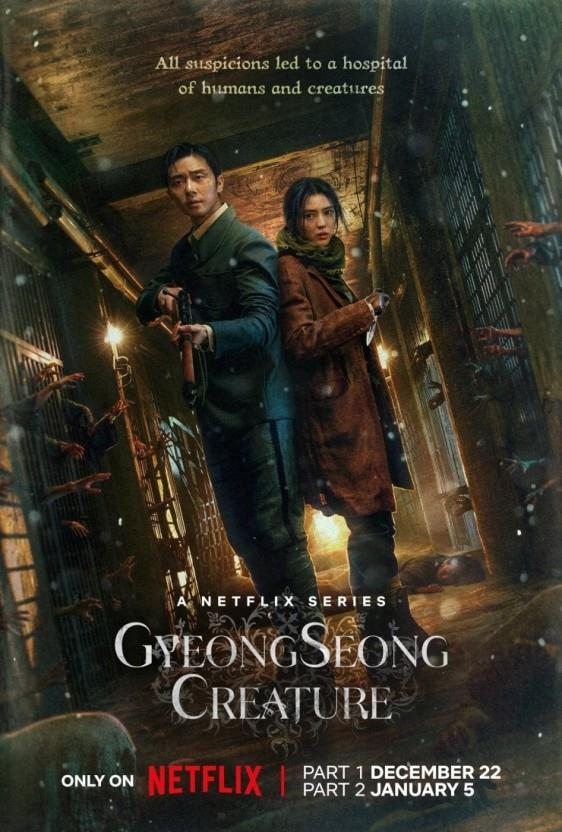
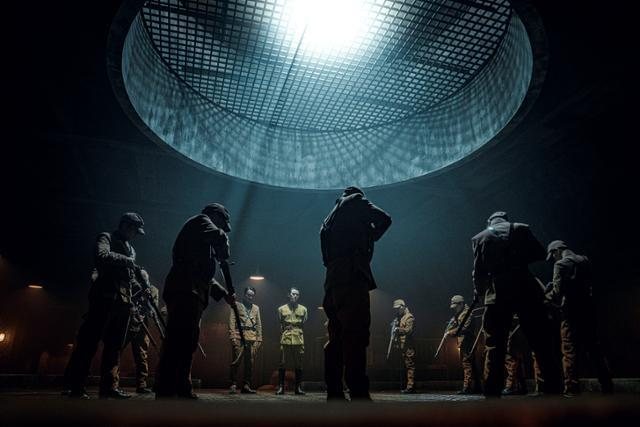
▲ (Drama still cut) The Japanese military is wary of a monster made from biometric experiments
#So what is ‘Unit 731’?
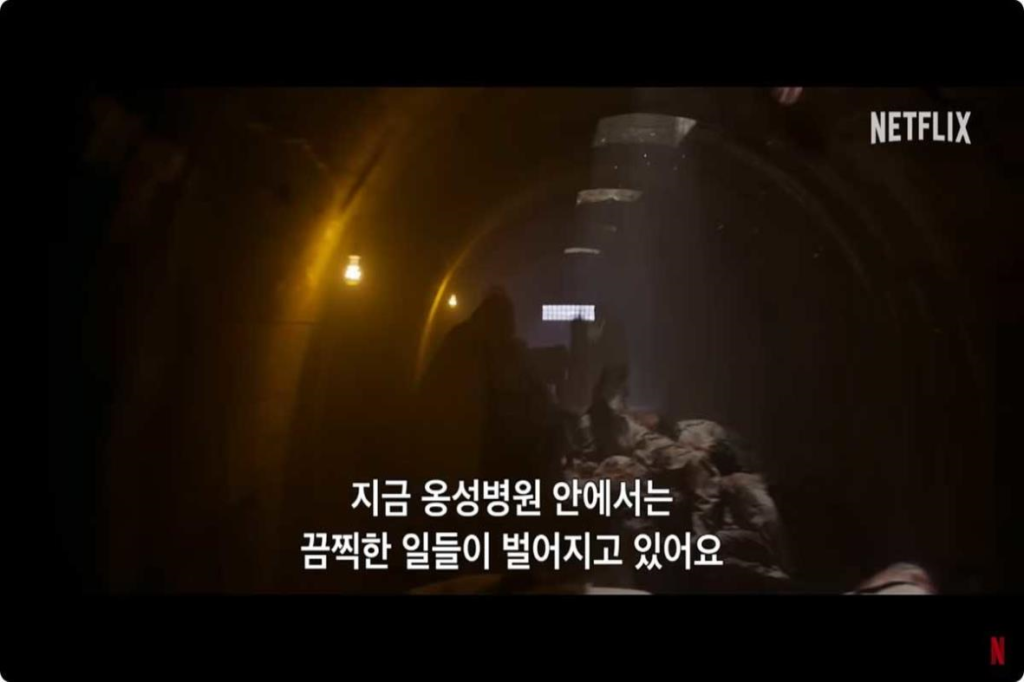
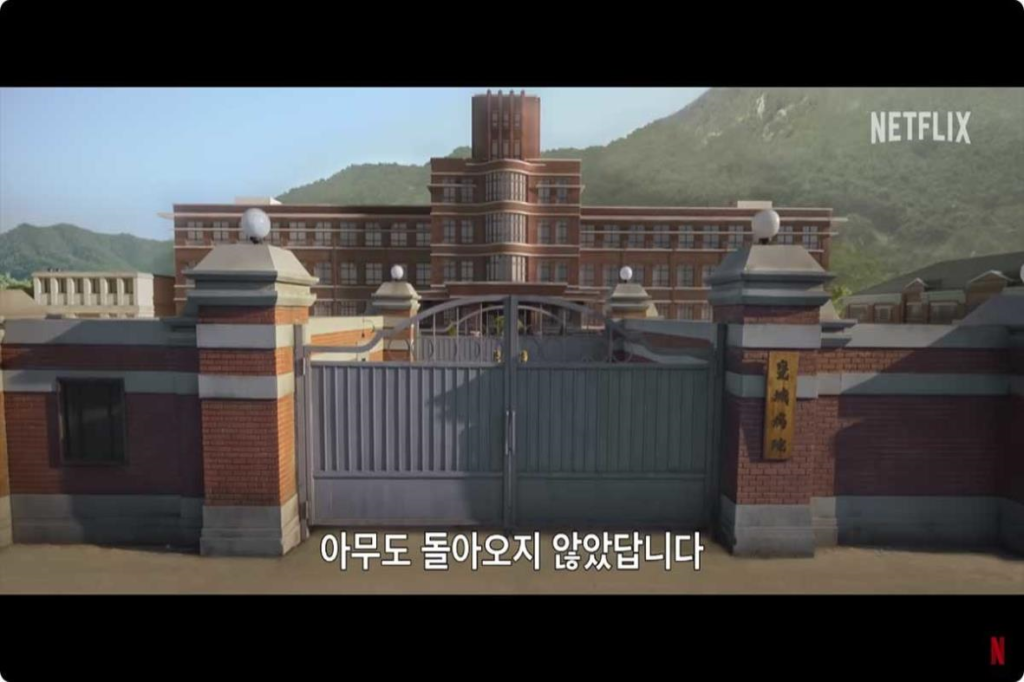
▲ (Gyeongseong Creature Trailer) Ongseong Hospital in a drama reminiscent of ‘Unit 731’
‘Unit 731’ was a unit that fought in Japan’s biochemical war during World War II. Unit 731 is located in Harbin, China, and conducted biological experiments to develop powerful biological and chemical weapons there. The majority of the subjects were Chinese, and Koreans who fought for independence in Manchuria and prisoner of the Soviet Union were also forcibly dragged and tested. The subject of the biological experiment was called ‘maruta’, which means a peeled log. The experiment was conducted brutally while treating people as logs that could not feel pain. At least 3,000 people died in Unit 731.
#What atrocities did they commit?

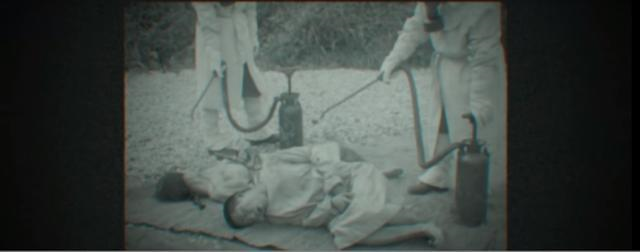
▲ (Screen capture of Gyeongseong Creature) The Japanese military is conducting
experiments on living people.
There was no “maruta” that went back alive. At the end of the people who were taken to “maruta,” there was only death. They were subjected to sadistic experiments all day.
Many human trials were conducted in Unit 731.
The 731 units injected horse blood and salt water instead of human blood in order to study the substances to replace blood. They also experimented by sending people out at minus 20 to 30 degrees Celsius to make statues and then thawing them. They also dissected people alive to examine their organs’ functions. They tested ‘people’ to see under what conditions a person dies and survives.
Hideo Sumizu, who served in the 731st Unit when he was 14 years old, said he remembered a sample room with a marutta that was dissected alive. There were specimens of a woman and a child in her stomach.
In addition, Unit 731 split people’s bodies and placed fleas to observe the infection process. Unit 731 also made people drink water containing germs, and dissected those who died.
The 731 unit planted plague bacteria in fleas and sprayed them on Manchurian civilians to experiment and attack using bacteria.
#How did these facts come to light?
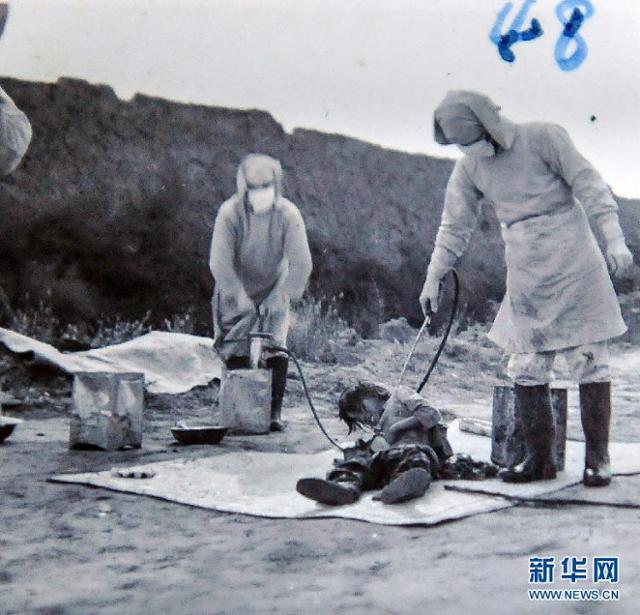
The atrocities of Unit 731 were widely publicized by Keiichi Tsuneishi, an assistant professor at the National University of Nagasaki in Japan. He published a research paper in 1981. The report detailed the process of human experiments. The following is part of the report.
“Unit 731, which specializes in bacterial warfare, conducted human tests and poisoned many Koreans and Chinese to use epidemic hemorrhagic fever for bacterial warfare.”
“In healthy humans, a saline emulsion made by grinding ticks containing pathogens is injected to infect epidemic hemorrhagic fever. If a person is alive within 5 days of the outbreak, remove the person’s intestines. (Omitted) In order to examine whether pathogens remain, people are eventually dissected alive. (Omitted) Just before the defeat, all of these subjects were poisoned or killed with pistols to destroy evidence.”
▲ (Photo released by China’s Jilin Provincial Archives)
Japanese health department employees conduct plague quarantine activities on children in Nungan County, Jilin Province, in November 1940.
#A later story
It took more than 40 years for the atrocities of Unit 731 to be known to the world.
The Japanese government destroyed the facilities of Unit 731 and erased or incinerated related documents after the defeat
The 731 unit who participated in the brutal experiment held key positions such as doctors, the chairman of the Green Cross, the head of the Tokyo University Medical Department, and the principal of the Army Self-Defense Force’s School of Sanitation They has been on a roll with medical knowledge acquired through biological experiments. There was no proper reflection and apology.
The creature of Gyeongseong Creature may be fiction, but the atrocities in the drama are real.
t would be even more meaningful to watch the drama, bearing in mind that the cruel acts committed in Gyeongseong Creatures could have actually happened.
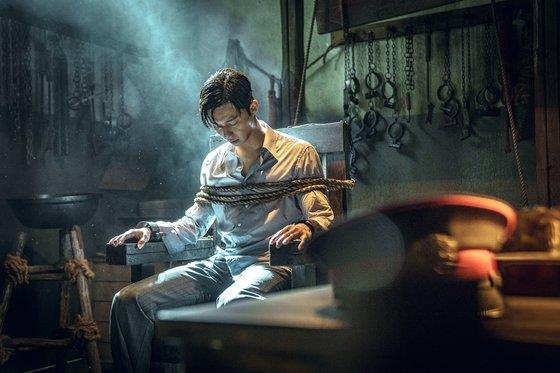
▲ (Drama still cut) Jang Tae-sang (Park Seo-joon), who is being tortured by the Japanese military
Excellence in Hangul in Deep Rooted Tree
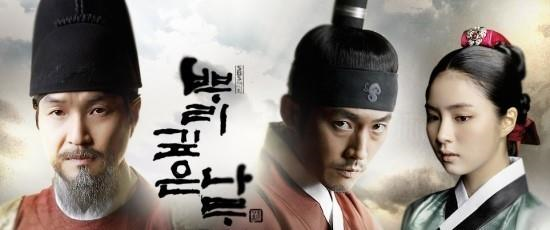
“Deep Rooted Tree” is a drama that deals with the history of Hangeul and the process of spreading it, created by King Sejong of the Joseon Dynasty. You can vividly look at the background and reason for the creation of Hangeul.
Until the Joseon Dynasty, unique letter of Korea did not exist. The yangban could write in Chinese characters, but the people who were busy making a living did not have time to learn Chinese characters with many letters and number of strokes
Because of this, there were many difficulties and inconveniences. The general public had no way to record something, and even if something unfair happened, they could not write an appeal to the government office.
Even if other characters were borrowed, it did not conform to the sentiment of the nation or it was impossible to accurately record Korean. For example, there were cases where the name could not be properly recorded in Chinese characters. Kang Chae-yoon’s childhood name in Drama is ‘Ddolbok.’ However, this word ‘Ddolbok’ cannot be written in Chinese characters. Because there is no Chinese character representing ‘Ddol’.
Sejong the Great, who felt sorry for this, created “Hunminjeongeum”.
#What is Hunminjeongeum? What is Hangeul?
Hunminjeongeum is a unique Korean character created and distributed by Sejong the Great, the fourth king of the Joseon Dynasty.
It was created in the 25th year of King Sejong (1443) and was proclaimed in the 28th year of King Sejong (1446).
Hunminjeongeum is phonetic characters, and consists of 17 consonants and 28 characters, a vowel of 11 characters. Currently, 24 characters are used.
The use of these Hunminjeongeum was controlled by the Japanese during Japanese colonial era.
Japan thought that using Hunminjeongeum promotes the national spirit of Korea. Therefore, Japan adopted the policy of exterminating the Korean language, which prohibits the Korean language and Hunminjeongeum.
In response, independence activists took the lead in the enlightenment movement to spread the Korean language and continue the line of fame.
In particular, Korean language scholar Ju Si-kyung was a Korean language scholar and played a major role in popularization by studying the professional theory of Hunminjeongeum and cultivating the younger generation.
Hunminjeongeum has been called hangeul since the early 1910s. This name was started by scholars, including Ju Si-kyung. Here, ‘한(han)’ means big, and ‘한글(Hangeul)’ means ‘big words’.
Hunminjeongeum refers to characters, but it also refers to the name of the book that explained it.
The book Hunminjeongeum is also called ‘Hunminjeongeum Haerye’ because it has a haerye(Explaining with an example) attached to it.
#Purpose of creation
In particular, the purpose of the creation of Hunminjeongeum is well revealed in the preface part of the book Hunminjeongeum.
나랏〮말〯ᄊᆞ미〮 中듀ᇰ國귁〮에〮달아〮 文문字ᄍᆞᆼ〮와〮로〮서르ᄉᆞᄆᆞᆺ디〮아니〮ᄒᆞᆯᄊᆡ〮
Korean is different from Chinese, so the letters and languages don’t match each other.
이〮런젼ᄎᆞ〮로〮어린〮百ᄇᆡᆨ〮姓셔ᇰ〮이〮니르고〮져〮호ᇙ〮배〮이셔〮도〮
For this reason, even if the people have something to say
ᄆᆞᄎᆞᆷ〮내〯제ᄠᅳ〮들〮시러〮펴디〮몯〯ᄒᆞᇙ노〮미〮하니〮라〮
There are many who can’t achieve that.
내〮이〮ᄅᆞᆯ〮為윙〮ᄒᆞ〮야〮어〯엿비〮너겨〮
I feel very sorry for this
새〮로〮스〮믈〮여듧〮字ᄍᆞᆼ〮ᄅᆞᆯ〮ᄆᆡᇰᄀᆞ〮노니〮
So I invent the new 28 letters .
사〯ᄅᆞᆷ마〯다〮ᄒᆡ〯ᅇᅧ〮수〯ᄫᅵ〮니겨〮날〮로〮ᄡᅮ〮메〮便뼌安ᅙᅡᆫ킈〮ᄒᆞ고〮져〮ᄒᆞᇙᄯᆞᄅᆞ미〮니라〮
I hope everyone to learn letters easily and use them comfortably.
In this way, Hangeul was created for the convenience of the people. After inventing Hangeul, King Sejong widely distributed it through publications such as “Yongbieocheonga” and “Worincheongangjigok”.
At the time of the creation of Hangeul, the nobleman, who enjoyed Chinese characters, opposed to Hangeul. In the early days, Hangeul was mainly used for commoners and women. Ordinary people were able to write down their thoughts in writing. Hangeul was used in various ways to pass on culture or resolve civil complaints.
#The Value of Hunminjeongeum
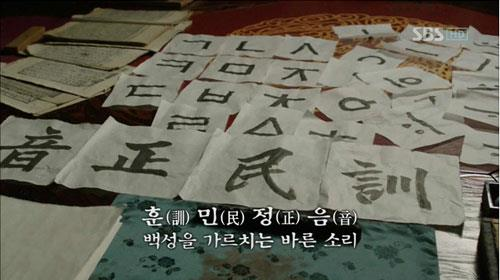
First, Hunminjeongeum is a democratic letter.
Hunminjeongeum has a clear purpose of its invention. It was made for the convenient writing life of the people. It has become an environment where people can easily write what they want to say than in the past. This is also evident in the preface of Hunminjeongeum interpreted above.
Second, Hunminjeongeum is a scientific letter.
Hunminjeongeum consists of consonants and vowels, both of which are scientifically and systematically made.
Consonants were modeled after the shape of the pronunciation organ formed when pronouncing each letter.
After making five basic letters after copying the pronunciation organs, adding strokes to the basic letters to make letters with different sounds. At this time, adding strokes intensifies the sound. In addition, there are letters that are made differently without the principle of hieroglyphics and provisional strokes.
Basic letter
(hieroglyphic)
model
a letter with a stroke added to it
ㄱ
혀뿌리가 목구멍을 막는 모양
ㅋ
ㄴ
혀끝이 윗잇몸에 붙는 모양
ㄷ
ㅌ
ㅁ
입 모양을 본뜬 것
ㅂ
ㅍ
ㅅ
이 모양을 본뜬 것
ㅈ
ㅊ
ㅇ
목구멍의 모양
ㆆ
ㅎ
the letter without the principle
ㆁ, ㄹ, ㅿ
The vowel was modeled after sky, ground, and person, and made three basic letters.
Basic letter
(hieroglyphic)
model
letters combined firstly
letters combined secondly
ㆍ
하늘
ㅏㅗ
ㅑㅛ
ㅡ
땅
ㅓㅜ
ㅕㅠ
ㅣ
사람
Two or more of these three fundamentals were combined to create a new letter.
Third, it is convenient and easy to learn.
As above, Hangeul has the advantage of being scientific and easy for anyone to learn because it is made according to systematic laws and is produced based on phonological research.
It is easy to learn because there is a close relationship between each letter and the sound it is pronounced..
In addition, in the case of English, one letter may have multiple sounds, but Hangeul is easier to use in a one-to-one correspondence with letters and sounds.
In fact, the Indonesian ethnic minority “Cia-cia,” adopts and uses Hangeul, which is easy to learn, as a letter to preserve their language. They had their own language, but they did not have their own characters. So they have been actively using Hangeul since 2008.
Fourth, Hunminjeongeum is an original and unique letter.
Hangeul is the only letter that is clear who, when, and why made it.
While other letters were completed through historical progressive development and change, Hunminjeongeum was created in the 15th century by King Sejong and scholars.
In addition, in the case of Roman letters, the initial, neutral, and final consonants are arranged side by side. But Hangeul has increased readability by choosing a method of collecting and writing in consideration of pronunciation in syllable units.
#Hangeul Day
In order to commemorate the creation of Hangeul and to honor excellence, the Republic of Korea has designated Hangeul Day as a national holiday. In 1926, the Hangeul Society designated “Gagyanal” as September 29 of the lunar calendar to mark the 480th anniversary of the investment of Hunminjeongeum. Gagyanal was renamed “Hangul Day” in 1928.
After liberation, the date was confirmed on October 9 of the solar calendar, and it was designated as a national holiday from 2006.
#Hangeul
Linguist J. Diamond praised Hangeul as the world’s most reasonable character.
In the scientific journal ‘Discovery’, he praised Hangeul for having a scientific system and contributing to the effective spread of knowledge.
In addition, the book Hunminjeongeum was designated as National Treasure No. 70, and it was registered as a UNESCO World Heritage Site in October 1997..
#Participating: Making Korean names

▲ VANK launches pure Korean name making service for 170 million Korean Wave fans overseas
Click here
Copyright © [hfe_current_year] [hfe_site_title] | Powered by VANK